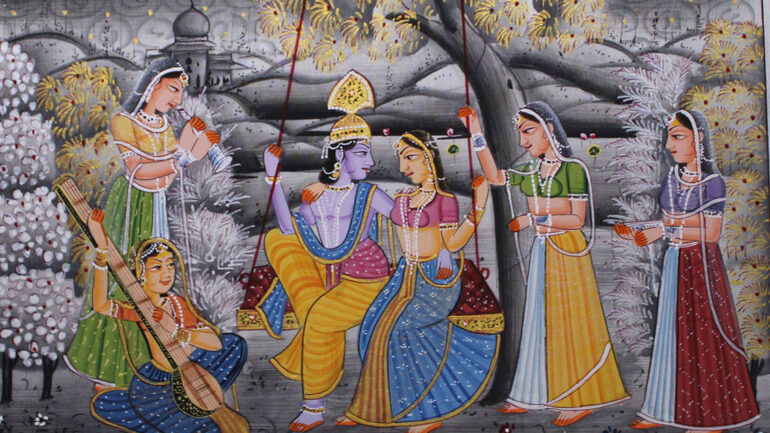Importance of peepal tree in hiduism –
Peepal tree is considered sacred as the Holy Trinity, Lord Brahma, Lord Vishnu and Lord Shiva reside in the tree.
It is believed that the spirits of the ancestors live on the Peepal tree. There is a tradition of worshiping the ancestors in all the religions, especially in Hinduism. Ancestors are worshiped on the day of Amavasya. Therefore, worshiping the Peepal tree is considered as an offering for our prayers to the ancestors.
अश्वत्थ: सर्ववृक्षाणां देवर्षीणां च नारद: |
गन्धर्वाणां चित्ररथ: सिद्धानां कपिलो मुनि: || 26||
aśhvatthaḥ sarva-vṛikṣhāṇāṁ devarṣhīṇāṁ cha nāradaḥ
gandharvāṇāṁ chitrarathaḥ siddhānāṁ kapilo muniḥ
“Amongst trees I am the peepal tree (sacred fig tree); of the celestial sages I am Narad. Amongst the Gandharvas I am Chitrath, and amongst the siddhas I am the sage Kapil. ”
Lord Krishna
In Mahabharata, Lord Krishna has himself said that he is the Peepal tree. The roots of the tree are Vishnu. Its stems are Keshav. The branches are Narayan and the leaves are Hari himself. This is why the tradition of worshiping a peepal tree is followed from the ancient times. It is believed that both Lord Vishnu and Goddess Lakshmi are present there in the Peepal tree on a Somavati Amavasya.
Mahabharata mentions the story of Savitri and Satyavaan. Savitri’s husband Satyavaan died under a Peepal tree. Savitri was so badly hurt that she started worshiping Lord of death, Yamraj and tied a sacred thread around a Peepal tree, praying that her husband be brought to life again. Compelled by her, Lord Yamraja had to return the man back to life. Since then, married Hindu women follow the custom of Peepal Puja on the day of Vat Savitri Vrat.
Peepal tree is also linked to Lord Brahma, the deity who is unborn and never takes birth and in whom the spirits finally get assimilated to. This is also a reason why performing the last rites under a Peepal tree is what people prefer more.
Peepal tree never dies, it stays forever. Its permanent nature also relates it with the permanent soul, which is immortal and never dies. Human body perishes but the soul never does. Hence, this is another reason to worship the Peepal tree.
Use of peepal tree leaves –
Peepal trees are widely found in India. Peepal trees are considered extremely sacred by Hindus and Buddhists as well. More than 2000 Years ago, Siddhartha Gautama Buddha, the founder of Buddhism, while sitting under a tree of Peepal immersed in deep meditation, became fully enlightened and attained Nirvana. Ever since then, the Peepal tree has also been known as Bodhee Vriksh (Tree of Enlightenment).
Peepal leaves have been used for writing in India even before the invention of paper.
Painting on Peepal leaf is a delicate work of art, which originated in the southern state of Kerala in India. The painting is done on dry Peepal leaves. It’s one of the oldest form of art, which shows the ingenuity & patience of the creative artists. This art-form came into being due to the beautiful shape of Peepal leaf. Today very few artists are left behind in India, who are still practicing this ancient leaf-art.
The process –
This art form needs lot of patience, delicacy and concentration. The leaves which are used for painting are usually peepal tree leaf or banyan tree leaf. Firstly the leaves are pluck from the tree and is been segregated in varied sizes. Then leaves are soaked in a bowl of water for about ten to fifteen days. Purpose of soaking the leaves is to remove the outer layer of the leaves. Leaves are transferred from one to many bowls of water to sustain the whiteness of the veins and to avoid the decaying of the leaves. After the leaves are completely sunk, it is been washed with the hands and tooth brush very cautiously.The skeleton leaves are kept for dry under the sunlight. Leaves after dried under the sun, it sustains some strength for itself which helps in holding the paints.



